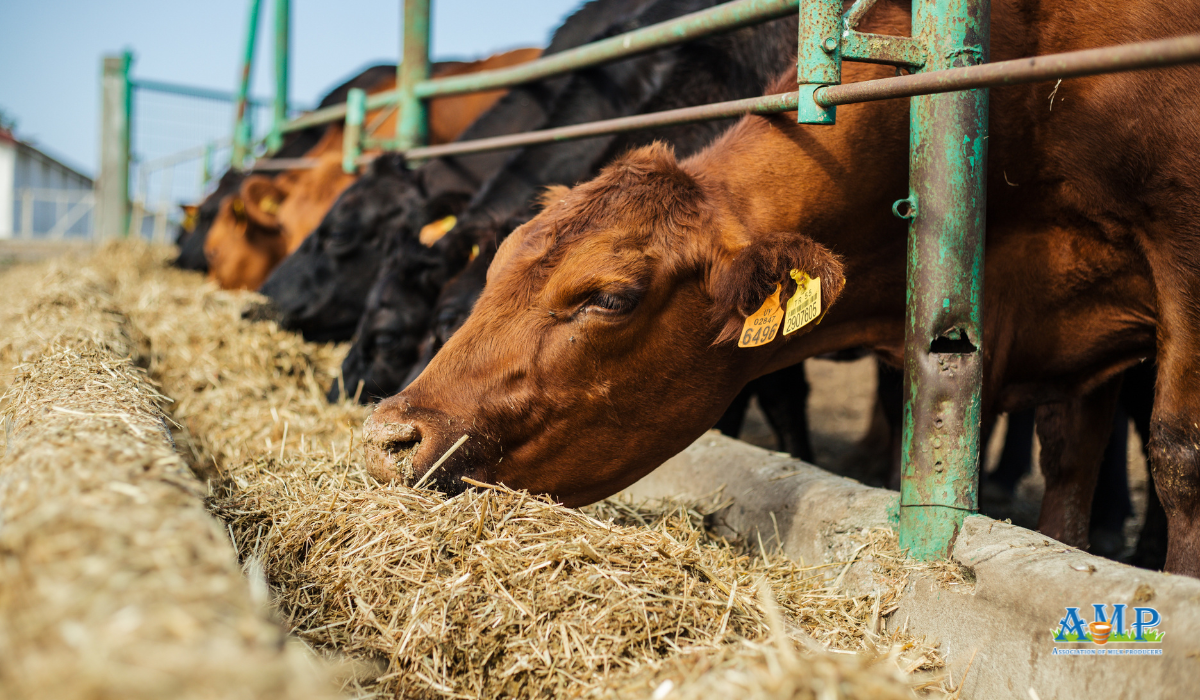Despite the ongoing annual decline in the number of cattle in Ukraine, certain dairy farms are increasing their herds of high-yield cows.
This was reported by Georgii Kukhaleishvili, an analyst at the Association of Milk Producers of Ukraine (AMP).
According to preliminary data from the Ministry of Agrarian Policy and Food of Ukraine, as of May 1, 2024, there were 2,376.8 thousand heads of cattle in Ukraine, including 1,264.6 thousand cows, in both household and industrial sectors. Compared to April 1, 2024, the cattle population in Ukraine increased by 46.3 thousand head (+2%), and the number of cows grew by 800 head (+0.1%). Compared to May 1, 2023, the cattle population decreased by 176.4 thousand head (-7%), including cows by 91.9 thousand head (-7%). Approximately 39% of the animals are kept in industrial enterprises, and 61% are in household farms.
In the industrial sector, there are 916.1 thousand head of cattle, including 378.7 thousand cows, which equals the number of animals recorded on April 1, 2024. Over the past year, the cattle population in enterprises decreased by 24.3 thousand head (-3%), and the number of cows decreased by 13 thousand head (-3%).
In the household sector, there are 1,460.7 thousand head of cattle, an increase of 46.3 thousand head (+3%) compared to April 1, 2024. The number of cows in household farms as of May 1, 2024, was 885.9 thousand head, an increase of 800 head (+0.1%) compared to the previous month. Over the past year, the number of cattle in household farms decreased by 152.1 thousand head (-10%), and the number of cows decreased by 78.9 thousand head (-9%).
Georgii Kukhaleishvili notes that the reduction in cattle herds is a longstanding problem in Ukraine due to the lack of an effective state support program for dairy farming.
"The war has only exacerbated the situation. In frontline regions, it is typical for a certain number of cattle to die as a result of shelling by Russian occupiers. Many farmers left their cows in occupied territories, where they are not accounted for or have been confiscated by Russian forces and sold for meat. Injured cows are culled, further reducing the herd size," the expert emphasizes.
Many farmers are refraining from increasing their herds during wartime and due to a lack of working capital. Maintaining of cows is becoming more expensive due to reduced profitability in milk production and increased costs for feed preparation, diesel fuel, and electricity. According to the study "Ukraine: Impact of War on Agricultural Production Profitability", conducted by UCAB, the Ministry of Agrarian Policy, with support from GFDRR, production costs are rising faster than prices for finished products, and feed costs are expected to increase due to the stabilization of grain and oilseed prices, rising electricity costs, hryvnia depreciation, and declining purchasing power of Ukrainians. A challenge for farmers remains the reduction of pastures and arable land due to mine and shell contamination.
However, there is cautious optimism regarding the growth of dairy farms in relatively safe regions of Ukraine, which, despite the war, are modernizing existing facilities and building new capacities. They are also increasing their herds of high-yield cows. According to AMP estimates, at least 40 farms are implementing these measures.
Household farms have been the most vulnerable to these challenges, with their cattle herds declining at a faster rate. Conversely, enterprises have shown greater resilience to the war's impacts. Preliminary data from the Ministry of Agrarian Policy indicate that the cattle population in agricultural enterprises increased in Ternopil region by 12%, Mykolaiv region by 6%, Zakarpattia region by 6%, Khmelnytskyi region by 4%, Ivano-Frankivsk region by 3%, Cherkasy region by 2%, and Vinnytsia region by 1% compared to May 1 of the previous year.
Regionally, approximately 54% of the total cattle population is kept in all categories of farms in the following regions:
- Khmelnytskyi region – 218.2 thousand head;
- Vinnytsia region – 191.1 thousand head;
- Poltava region – 185 thousand head;
- Ternopil region – 148.3 thousand head;
- Odesa region – 142.4 thousand head;
- Chernihiv region – 127.3 thousand head;
- Cherkasy region – 129.3 thousand head;
- Zakarpattia region – 132.3 thousand head.
Press service of the Association of Milk Producers
Follow us on Facebook
Related News


